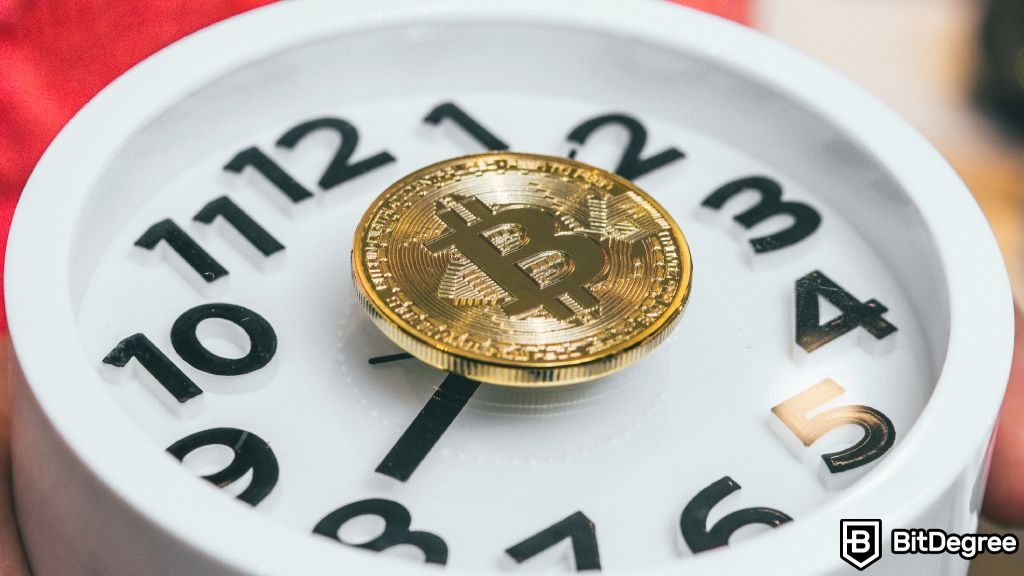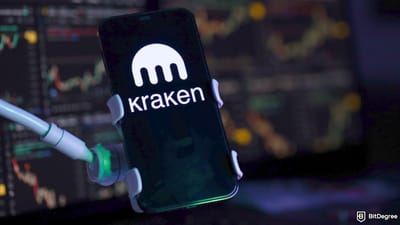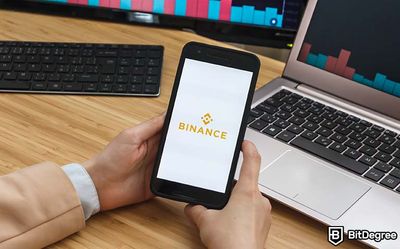Key Takeaways
- The average Bitcoin transaction time is 10-60 minutes, depending on the number of confirmations required;
- The Bitcoin transaction confirmation time is influenced by a variety of factors, such as network congestion and transaction fees;
- It’s possible to make faster BTC transactions using the Lightning Network;
- Bitcoin transaction time calculators help to estimate appropriate fees for the desired Bitcoin transaction speed.
Stop overpaying - start transferring money with Ogvio. Join the waitlist & grab early Rewards NOW! 🎁
In today's digital era, where speed and efficiency reign supreme, Bitcoin has emerged as a leading player in the world of digital currency. As more and more individuals and businesses embrace the use of BTC, it becomes crucial to understand one of its fundamental aspects – the Bitcoin transaction time.
How long does it take for a Bitcoin transaction to be processed? What factors influence its speed? And what implications does this have for users and the broader blockchain network?
Let's find answers to these and many more questions related to Bitcoin transactions together. Besides, remember that, if you want to buy or sell Bitcoin, you should stick to trustworthy platforms like Binance, Kraken, or KuCoin.

Did you know?
Subscribe - We publish new crypto explainer videos every week!
Crypto Fees Explained: How Not to Overpay? (Animated)


Table of Contents
- 1. How Does a Bitcoin Transaction Work?
- 1.1. Confirmations and Transaction Verification
- 1.2. Factors That Influence Bitcoin Transaction Time
- 2. Transaction Speed Challenges
- 3. Solutions and Innovations
- 3.1. Layer 2 Scaling Solutions – the Lightning Network
- 3.2. Protocol and Network Upgrades
- 3.3. Bitcoin Transaction Time Calculators
- 4. Tips for Faster Bitcoin Transactions
- 5. Conclusions
How Does a Bitcoin Transaction Work?
The average Bitcoin transaction time today is 10-60 minutes. However, to understand what influences it, we need to take a closer look at the processes that happen behind the curtains. So, let's do just that.
Latest Deal Active Right Now:Bitcoin transactions are facilitated through a decentralized network of computers, known as the Bitcoin blockchain. This blockchain serves as a public ledger that records all transactions ever made in Bitcoin.
However, to make a Bitcoin transaction, you must use a digital wallet (like Coinbase Wallet) or a hardware wallet (like Ledger Nano X). These applications store the user's private and public keys. The private key is essential for authorizing transactions, while the public key serves as the address for receiving funds
That said, let's break down the technical processes that happen when a Bitcoin transaction is made:
- Transaction Creation. To initiate a Bitcoin transaction, a user creates a transaction message that includes the recipient's public key, the amount to be sent, and other necessary details. This transaction message is then signed with the sender's private key to verify authenticity.
- Transaction Propagation. The signed transaction is broadcast to the Bitcoin network, where it propagates from one node to another. Nodes are computers connected to the Bitcoin network that store and validate transactions.

- Transaction Validation. Participants in the Bitcoin network dedicate computational power to solving complex mathematical problems, and they play a crucial role in validating and confirming transactions. These participants are called miners.
- Proof of Work (PoW). Miners compete to solve a cryptographic puzzle by repeatedly hashing the transaction data along with other parameters until a specific pattern is found. This process requires substantial computational power and is intentionally resource-intensive to deter malicious activities[1].
- Block Formation. Once a miner successfully solves the puzzle, they create a new block containing the validated transactions, along with a reference to the previous block. This creates a chain of blocks, forming the Bitcoin blockchain.

- Block Propagation and Consensus. The newly created block is broadcast to the network, and other nodes validate its contents. Nodes check if the transactions are legitimate, the signatures are valid, and the sender has sufficient funds. Consensus is achieved when a majority of nodes agree that the block is valid.
- Block Confirmation. To ensure transaction security, multiple subsequent blocks are added on top of the validated block. The more blocks that follow a specific transaction, the more secure and irreversible it becomes.
Besides, keep in mind that miners are rewarded for their computational efforts and for securing the network. Each validated block includes a special transaction, known as the coinbase transaction, which generates new Bitcoins and collects transaction fees from the included transactions. Just don’t confuse it with the Coinbase exchange; it has nothing to do with it.
By combining cryptographic techniques, consensus mechanisms, and the computational power of miners, Bitcoin transactions achieve a decentralized and trustless system, ensuring the integrity and security of digital transactions without relying on a central authority.
Confirmations and Transaction Verification
Confirmations in the context of Bitcoin refer to the number of blocks that have been added to the Bitcoin blockchain after a particular transaction has been included in a block. Each new block added to the blockchain increases the number of confirmations for all preceding transactions in that block.
Confirmations play a crucial role in determining the level of security and finality of a BTC transaction. So, let's talk about how confirmations impact Bitcoin transaction time today.
When a transaction is first included in a block, it has zero confirmations. At this stage, the transaction is considered unconfirmed or pending. The transaction is visible to the network, but it is not yet considered fully validated or irreversible.
As miners continue to add new blocks to the Bitcoin blockchain, the transaction accumulates confirmations. Bitcoin users typically wait for a certain number of confirmations before considering a transaction as sufficiently secure. Besides, for significant transactions, it is advisable to wait for multiple confirmations to minimize the risk of a transaction being reversed.

With each additional confirmation, the probability of a transaction being reversed or double-spent decreases significantly[2]. This is because it becomes increasingly difficult for an attacker to rewrite the blockchain history and replace a transaction that has been buried under multiple blocks.
The number of confirmations required for a transaction to be considered secure depends on the sensitivity of the transaction.
For most everyday transactions, a few confirmations (typically 1-6) are generally sufficient. However, for high-value or critical transactions, it is advisable to wait for a higher number of confirmations, such as 6 or more, to reduce the risk of a double-spending attack.
The time it takes for a transaction to receive a certain number of confirmations can vary. The Bitcoin network aims to add a new block approximately every 10 minutes, but due to mining difficulty adjustments and network congestion, block times can fluctuate.
As a result, the time required to accumulate a specific number of confirmations can range from minutes to hours.

Once a transaction has several confirmations, it is considered final and virtually irreversible. Reversing a transaction with a high number of confirmations would require an immense amount of computational power, making it practically infeasible.
It's important to note that while waiting for confirmations increases the security of a transaction, it also introduces a trade-off with transaction speed. For low-value transactions or cases where speed is essential, users and platforms may choose to accept a certain level of risk by accepting transactions with fewer confirmations.
To illustrate this, you can think of Binance and Kraken BTC deposits. While Binance requires at least 2 network confirmations before unlocking your BTC deposit, Kraken requires at least 3. This means you can use the Bitcoin deposited in Binance faster, but reversing a verified BTC deposit on Kraken is more difficult.
Factors That Influence Bitcoin Transaction Time
If you want to calculate the average Bitcoin transaction time, you must know that there is more than one factor you need to take into consideration, namely:
Transaction Fees
Bitcoin transactions often include a transaction fee that is paid to miners. Transactions with higher fees are more likely to be included in the next block and, therefore, have faster confirmation times. Conversely, transactions with lower fees may take longer to be confirmed.
Network Congestion
The number of pending transactions on the Bitcoin network can affect transaction time. If there is a high volume of transactions waiting to be included in blocks, the network becomes congested, and the average Bitcoin transaction time increases.
I’ll elaborate a bit more on transaction fees and network congestion in the next chapter.
Block Size and Block Time
The block size limit on the Bitcoin network determines the number of transactions that can be included in a single block.

Currently, the block size limit is 1MB, allowing for approximately 2,000 - 3,000 transactions per block. If the number of pending transactions exceeds the available space in the blocks, transactions with higher fees will be prioritized, potentially leading to longer confirmation times for transactions with lower fees.
Additionally, the block time, which aims to be approximately 10 minutes, can also fluctuate due to mining difficulty adjustments, affecting the overall transaction time.
Transaction Priority
Apart from prioritizing transactions based on transaction fees, certain types of transactions may also have higher priority for inclusion in blocks. For example, transactions that have been in the mempool (the waiting area for transactions) for a longer time may receive priority over newer transactions.
This priority system aims to prevent network spamming and ensure fairness in transaction confirmation.
Transaction Size
The size of a transaction in terms of the number of inputs and outputs it includes can impact confirmation time, too. Larger transactions with numerous inputs and outputs require more data to be processed and, therefore, may take longer to be confirmed.

This is because larger transactions occupy more space in blocks, potentially leading to delays in confirmation, especially during periods of high network activity.
So, it's important to consider all these factors when estimating transaction time on the Bitcoin network. Users can optimize their transaction time by setting an appropriate transaction fee based on network conditions, ensuring faster confirmation and avoiding potential delays.
Transaction Speed Challenges
Bitcoin transaction time faces several challenges that can affect the speed and efficiency of transferring funds (a few of which we've just talked about). These challenges include network congestion, scalability issues, transaction fees, and the role of miners in transaction prioritization.
As you already know, one of the primary challenges that impact Bitcoin transaction time today is network congestion. Just like rush hour traffic on a busy highway, when the number of transactions being processed exceeds the network's capacity, it can lead to delays.
Bitcoin operates on a blockchain, a concept you're already familiar with. Each transaction needs to be verified and added to a block (which has a limited size) before it can be considered complete.
However, if there are many pending transactions waiting to be added to the Bitcoin blockchain, it can create a backlog, resulting in slower transaction times.

It’s important to mention that the Bitcoin block size is actually part of an ongoing discussion - while some advocate for a larger block size limit or no limit at all (for speed and scalability), others argue that the limit should be kept or even reduced (for security reasons).
The argument about block size limits led to the creation of a hard fork of BTC called Bitcoin Cash (BCH), which was also hard forked and resulted in Bitcoin SV (BSV). BCH blocks can be as large as 32MB, and BSV blocks can go up to 4GB.
This brings us to another issue – scalability.
Scalability is a significant challenge faced by Bitcoin. As the popularity and adoption of BTC increases, the demand for transactions also grows. However, the current design of the Bitcoin network limits the number of transactions that can be processed within a given time frame.
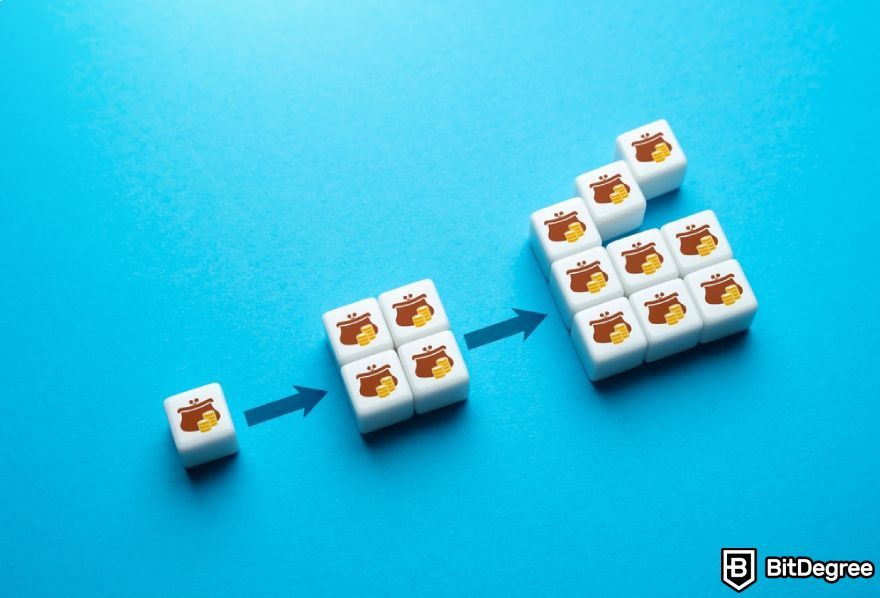
This limitation is primarily due to the block size and the time it takes to add a new block to the blockchain. As a result, Bitcoin faces challenges in scaling to meet the demands of a larger user base, leading to longer transaction times during peak periods.
Now, transaction fees also play a crucial role in determining current Bitcoin transaction time.
When users make a transaction, they have the option to attach a fee to incentivize miners to prioritize their transactions. Miners are responsible for verifying transactions and adding them to the Bitcoin blockchain. They typically prioritize transactions with higher fees, as it increases their potential earnings.
Consequently, if a user sets a low transaction fee, their transaction may be deprioritized, leading to longer confirmation times. During periods of network congestion, setting a higher transaction fee can help speed up the transaction confirmation process[3].
So, as you can see, the average Bitcoin transaction time can vary significantly depending on various factors.

For example, a long transaction time scenario might occur during peak usage periods or when there is a sudden surge in transaction volume. In such cases, network congestion is more likely to occur, leading to longer confirmation times.
Conversely, short transaction time scenarios may arise during periods of lower network activity, where fewer transactions are being processed. During these times, the network has more available capacity, resulting in faster confirmation times.
To illustrate this variability, let's consider an example. Imagine it's around Christmas, and many people are going to the mall to buy gifts for their loved ones. In order to buy whatever you need there, you need to stand in long lines and wait for your turn. There's no way around it – you will have to be patient.
Because you are shopping in a busy season, purchases that would usually take a few minutes of your time may now take hours. On the other hand, during a less busy period, such as a typical Tuesday in February, buying anything will be significantly faster.

To sum up, the Bitcoin transaction time today mostly faces challenges due to network congestion and scalability issues. These challenges can result in longer confirmation times, affecting the overall speed and efficiency of transactions.
Additionally, transaction fees play a crucial part in prioritizing transactions, with higher fees incentivizing faster confirmation.
It's important for users to understand the variability of transaction time and consider factors such as network activity when planning Bitcoin transactions. By navigating these challenges, users can make more informed decisions to ensure timely and smooth transactions within the Bitcoin network.
Besides, trading on renowned crypto exchanges like Binance, Kraken, or KuCoin also ensures smooth and timely transaction verification.
Solutions and Innovations
As the popularity of BTC continues to grow, so does the need for faster and more efficient Bitcoin transaction time processing. But is there a way to make them faster? Yes, there is.
In fact, there are various solutions and innovations that address the issue of current Bitcoin transaction time. These advancements aim to improve speed, privacy, and efficiency, offering users a seamless experience in the digital currency realm.
Layer 2 Scaling Solutions – the Lightning Network
One notable solution that has gained significant attention is the Lightning Network. Designed as a layer 2 scaling solution, the Lightning Network operates on top of the Bitcoin blockchain, enabling faster and cheaper transactions.
It achieves this by creating off-chain payment channels between users. These channels allow parties to conduct multiple transactions without recording each one on the Bitcoin blockchain.
The Lightning Network's impact on transaction speed is remarkable. By circumventing the need for every transaction to be included in the Bitcoin blockchain, it bypasses the need for block confirmations.
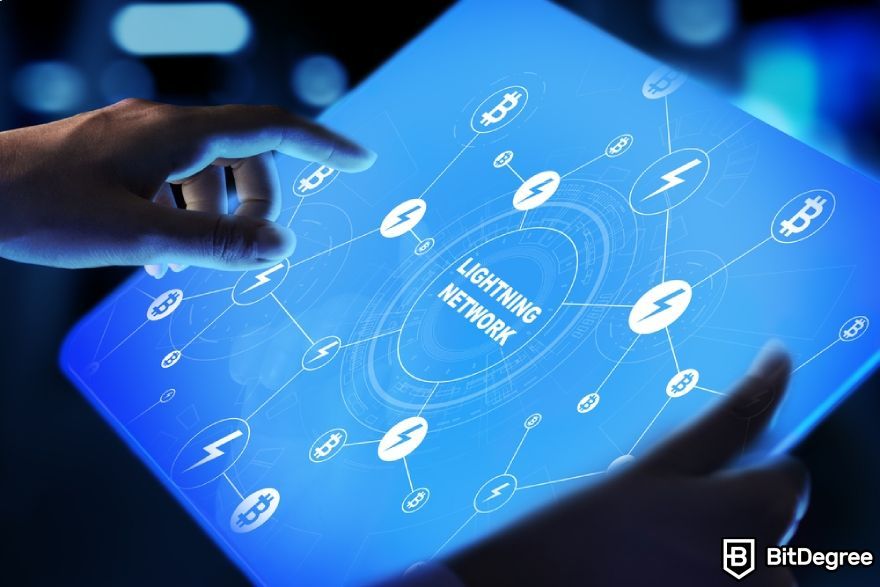
Therefore, with the Lightning Network, users can make instant payments that are confirmed within seconds, regardless of the network's overall transaction volume. This scalability solution not only enhances speed but also reduces fees, making microtransactions more feasible and cost-effective.
As I was looking into Bitcoin transaction time, I've noticed some people wondering, "A transaction without verification in Bitcoin could be fastest accomplished in how much time?". So, the answer to this question is – instantly, if you use the Lightning Network.
However, this solution has its own challenges, including a higher risk of malicious attacks. The constant online presence of nodes on Bitcoin's Lightning Network is necessary for facilitating payments. To perform transactions, involved parties must be online and use their private keys to sign in.
Consequently, there is a risk of potential coin theft if the computer housing the private keys is compromised.
Protocol and Network Upgrades
Apart from Layer 2 scaling solutions, Bitcoin has seen several protocol and network upgrades aimed at enhancing current Bitcoin transaction time, privacy, and efficiency.
One significant upgrade was the Segregated Witness (SegWit). SegWit works by separating transaction data into two segments: transaction signature data (witness data) and transaction ID (txid).
By removing the witness data from the original transaction block and storing it separately, SegWit effectively increases the block size limit without altering the maximum block size.
This optimization allows for more transactions to be included in each block, thereby reducing congestion on the network and lowering transaction fees.
Besides, SegWit introduced other benefits such as increased security and enhanced support for future Bitcoin features like the Lightning Network.
Moving further, the introduction of the Taproot upgrade brought increased privacy and improved efficiency to Bitcoin transactions.

The key feature of Taproot is its ability to improve the privacy of complex transactions on the Bitcoin network by allowing multiple participants to collaborate on a single transaction without revealing the details of their individual actions.
This is accomplished through the use of Schnorr signatures, which enable all parties to collectively sign a transaction, effectively combining their signatures into a single, compact signature.
As a result, complex transactions appear indistinguishable from simple transactions, thereby enhancing privacy on the blockchain.
In addition to privacy improvements, Taproot also enhanced scalability and efficiency by optimizing the way smart contracts are executed on the Bitcoin network.
By combining multiple conditions and outcomes into a single Merkle root, Taproot reduces the computational and storage overhead associated with executing complex smart contracts, leading to smaller transaction sizes and lower fees.

Did you know?
Subscribe - We publish new crypto explainer videos every week!
How to Avoid Major Crypto Investment Risks? (Beginner-Friendly)



- Secure and reliable
- Accepts fiat currencies
- Lots of trading options
- Reputable exchange
- Accepts fiat currencies
- Offers various trading options

- Huge trading variety
- Regulation-compliant around the globe
- Fair trading fees
- Beginner-friendly
- A wide array of features
- Vast number of different crypto coins & tokens

- Beginner-friendly
- Secure
- Decent trading and withdrawal fees
- Crypto.com Visa Card
- Automated tools & bots
- Ecosystem synergy with CRO
Bitcoin Transaction Time Calculators
Now, to assist users in estimating transaction time and choosing appropriate fees, Bitcoin transaction time calculators have emerged. These calculators consider various factors, such as network congestion and fee levels, to estimate how long a transaction is likely to take.
By analyzing historical data and current network conditions, these tools provide users with insights into the expected confirmation time for their transactions. In other words, they give users the estimated current Bitcoin transaction time.
The benefits of using a Bitcoin transaction time calculator are twofold. Firstly, it helps you set the appropriate fee to ensure your transactions are processed within the desired timeframe. Secondly, it enables you to make informed decisions based on network conditions, allowing you to choose the best time to send your transactions.
Tips for Faster Bitcoin Transactions
So, now that all is said and done, here are some tips for increasing the Bitcoin transaction time:
- Use Segregated Witness. Opt for wallets and exchanges that support SegWit addresses to benefit from increased transaction throughput and lower fees.
- Set Appropriate Transaction Fees. Adjust transaction fees based on network congestion to ensure your transaction is processed promptly. Wallets often provide options for customizing fees.
- Time Your Transactions. Monitor blockchain activity and aim to send transactions during periods of lower network congestion to avoid delays. Besides, you can use Bitcoin transaction time calculators to help you with that.
- Utilize Lightning Network. Consider using Lightning Network for smaller transactions or frequent payments to achieve instant and low-cost transactions off-chain.
- Optimize Wallet Settings. Some wallets allow users to adjust settings for transaction speed and confirmation times. Explore these options to customize transaction settings according to your preferences.
If you follow these tips, I think you won't have any problems with your Bitcoin transactions.
Conclusions
Understanding Bitcoin transaction time is crucial for any trader. While Bitcoin's transaction speed can vary, it generally takes around 10-60 minutes to get completed.
However, factors like network congestion, transaction fees, and many others can influence it. Either way, there are several ways to increase the transaction speed, including planning your transactions, optimizing your wallet settings, or using the Lightning Network.
Besides, when trading on trusted exchanges like Binance, Kraken, or KuCoin, remember to check how many confirmations the platform requires. This way, it will be easier to calculate the approximate duration of the transaction.
The content published on this website is not aimed to give any kind of financial, investment, trading, or any other form of advice. BitDegree.org does not endorse or suggest you to buy, sell or hold any kind of cryptocurrency. Before making financial investment decisions, do consult your financial advisor.
Scientific References
1. D. Gupta, J. Saia, M. Young: ‘Proof of Work Without All the Work’;
2. U. Chohan: ‘The Double Spending Problem and Cryptocurrencies’;
3. J. Kawahara: ‘Effect of Bitcoin Fee on Transaction-Confirmation Process’.
